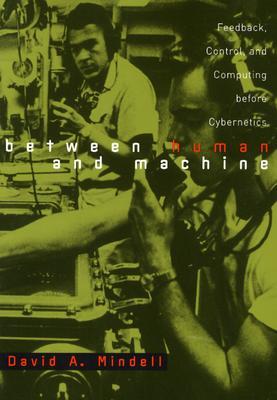Gary Hall (ed.): Digitize Me, Visualize Me, Search Me: Open Science and its Discontents (2011-)
Filed under living book | Tags: · computing, data, data mining, data visualisation, digital humanities, knowledge, networks, open access, open data, open knowledge, open science, open source, publishing, science, search, web
![]()
“One of the aims of the Living Books About Life series is to provide a ‘bridge’ or point of connection, translation, even interrogation and contestation, between the humanities and the sciences. Accordingly, this introduction to Digitize Me, Visualize Me, Search Me takes as its starting point the so-called ‘computational turn’ to data-intensive scholarship in the humanities.
The phrase ‘the computational turn’ has been adopted to refer to the process whereby techniques and methodologies drawn from computer science and related fields – including science visualization, interactive information visualization, image processing, network analysis, statistical data analysis, and the management, manipulation and mining of data – are being increasingly used to produce new ways of approaching and understanding texts in the humanities – what is sometimes thought of as ‘the digital humanities’.” (from Introduction)
Publisher Open Humanities Press
Living Books About Life series
View online (wiki/PDF/HTML articles/videos)
PDF (PDF’d Introduction with hyperlinked articles)
nØ1se exhibition catalogue (2000)
Filed under catalogue | Tags: · art, computing, history of computing, history of technology, media art, noise, robotics, science, technology

Catalogue for the multi-site multimedia exhibition in Cambridge and London (January-May 2000), devised by artist, Adam Lowe, and, historian of science, Simon Schaffer, and organised around three key themes in “digitality”:
Universal Language
Pattern Recognition
Data Synæsthetics
nØ1se is not limited to electronic media, but traces the digital imagination from such myths as Noah’s Ark, through the early modern experiments of Charles Babbage’s Difference Engine and Morse’s Telegraph, up to today’s charge coupled devices (CCDs), robotics and beyond.. It highlights digitality in history, technology, art and science, drawing upon a wide range of objects and images from artists and scientists around the globe — everything from 3000BC artefacts to the latest state-of-the-art pictures of the surface of atoms.
Catalogue contributors: Tabatha Andrews, William Armstrong, Art and Language, Charles Babbage, Stephen Baker, Joe Banks, Richard Barbrook, William Bateson, Evgen Bavcar, Robin Boast, Patrick Blackett, Jerry Brotton, Soraya de Chadarevian, Adrian Cussins, Su Dalgleish, John Dee, Umberto Eco, Richard Feynman, Manuel Franquelo, Peter Galison, Joy Garnett, Merrill Garnett, Joseph Grigely, Roger Guillemin, Sebastian Guillié, Mercurius Van Helmont, Lynn Hershman, Jeff Hughes, Margaret Watts Hughes, Lisa Jardine, Bill Jones, Athanasius Kircher, Bruno Latour, Malcom Longair, Mike Lynch, Paul D Miller (aka DJ Spooky), Iwan Morus, Gracie Ngale Morton, Sven Nebel, Joseph Nechvatal, Ben Neill, Pictic Balls, Roy Porter, Marc Quinn, Jonathan Ree, Michael Rees, Giles Revell, Kathleen Rogers, Romandson, Brian Rotman, Stan Vanderbeek, Tom Van Sant, Ludwig Von Siegen, Julian Simmons, Nicola Schwartz, Lillian Schwartz, Robert Shannon, Bessie Nakamarra Sims, Paddy Japaljarri Sims, Brian Cantwell Smith, Luc Steels, Bruce Sterling, Jozue Tanaka, John Tchalenko, Dave Tovee, John Tresch, Burhan Tufail, John Tresch, Catherine Wagner, Piers Wardle, Peter Weibel, CTR Wilson, John Wilkins, John Woodward, Charles Wynn-Williams.
Edited by Alfred Birnbaum
Conceived of and designed by Adam Lowe
Published by Kettle’s Yard, Cambridge UK, 2000
ISBN: 0907074782, 978-0907074786
118 pages
View online (Section 1; HTML articles)
View online (Section 2; HTML articles)
View online (Section 3; HTML articles)
David A. Mindell: Between Human and Machine: Feedback, Control, and Computing before Cybernetics (2002)
Filed under book | Tags: · computing, cybernetics, engineering, history of computing, history of technology, industry, information theory, machine, military, networks, noise, science, technology, telephone

Today, we associate the relationship between feedback, control, and computing with Norbert Wiener’s 1948 formulation of cybernetics. But the theoretical and practical foundations for cybernetics, control engineering, and digital computing were laid earlier, between the two world wars. In Between Human and Machine: Feedback, Control, and Computing before Cybernetics, David A. Mindell shows how the modern sciences of systems emerged from disparate engineering cultures and their convergence during World War II.
Mindell examines four different arenas of control systems research in the United States between the world wars: naval fire control, the Sperry Gyroscope Company, the Bell Telephone Laboratories, and Vannevar Bush’s laboratory at MIT. Each of these institutional sites had unique technical problems, organizational imperatives, and working environments, and each fostered a distinct engineering culture. Each also developed technologies to represent the world in a machine.
At the beginning of World War II, President Roosevelt established the National Defense Research Committee, one division of which was devoted to control systems. Mindell shows how the NDRC brought together representatives from the four pre-war engineering cultures, and how its projects synthesized conceptions of control, communications, and computing. By the time Wiener articulated his vision, these ideas were already suffusing through engineering. They would profoundly influence the digital world.
As a new way to conceptualize the history of computing, this book will be of great interest to historians of science, technology, and culture, as well as computer scientists and theorists.
Publisher Johns Hopkins University Press, 2002
ISBN 0801868955, 9780801868955
439 pages
Mindell’s lecture about the book at MIT (video, 78 min, 2002)
Review (Larry Owens, History of Science and Technology)
Download (removed on 2014-9-18 upon request of the author)
Comment (1)
